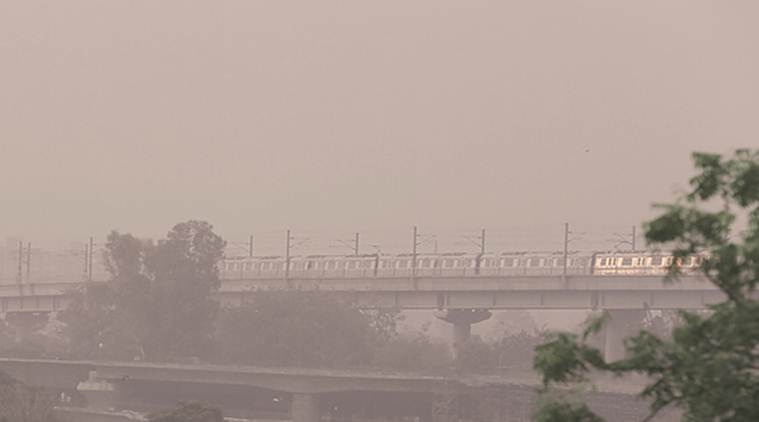- India
- International
Residents of Delhi will see more than 9 years added to their lives if pollution levels reduced to meet WHO guidelines: Report
Air pollution shortens the average life expectancy in India by 5.2 years, relative to what it would be if WHO guidelines were met; and 2.3 years relative to what it would be if pollution levels were reduced to meet the country’s own national standard, according to a new report.
 The report, released by the Energy Policy Institute University of Chicago (EPIC) on Tuesday, establishes that air quality shortens life expectancy by two years globally, relative to what it would be if air quality met the WHO guidelines. (Representational)
The report, released by the Energy Policy Institute University of Chicago (EPIC) on Tuesday, establishes that air quality shortens life expectancy by two years globally, relative to what it would be if air quality met the WHO guidelines. (Representational)
As countries around the world race to develop a coronavirus vaccine, there is another, every day killer causing billions of people to lead shorter and sicker lives: air pollution.
Air pollution shortens the average life expectancy in India by 5.2 years, relative to what it would be if World Health Organisation (WHO) guidelines were met; and 2.3 years relative to what it would be if pollution levels were reduced to meet the country’s own national standard, according to a new report. Some areas of India fare much worse than average, with air pollution shortening lives by 9.4 years in Delhi and 8.6 years in Uttar Pradesh, the most polluted state.
The report, released by the Energy Policy Institute University of Chicago (EPIC) on Tuesday, establishes that air quality shortens life expectancy by two years globally, relative to what it would be if air quality met the World Health Organisation (WHO) guidelines.
New data from the Air Quality Life Index (AQLI), which converts particulate air pollution into its impact on life expectancy, reveals that particulate pollution was the greatest risk to human health before Covid-19. And without strong and sustained public policy, it will be the greatest risk be after Covid-19.
In 2018, the third United Nations high-level meeting on non-communicable diseases (NCDs) recognised household and outdoor air pollution as the fifth risk factor for NCDs, alongside unhealthy diets, tobacco smoking, harmful use of alcohol and physical inactivity. Particulate pollution has a more devastating impact on life expectancy than communicable diseases like tuberculosis and HIV/AIDS, and behavioural killers like cigarette smoking.

South Asia has seen a 44 per cent rise in pollution, cutting lives short by five years on an average in Bangladesh, India, Nepal and Pakistan. About a quarter of the global population lives in these four countries, yet they make up 60 percent of the life years lost to pollution.
While high pollution across the entirety of Bangladesh makes it the most polluted country in the world, a quarter of India’s population is exposed to pollution levels not seen in any other country. According to the report, the nearly 250 million residents of Uttar Pradesh are on track to lose more than 8 years of life expectancy relative to if the air quality met WHO guidelines. Residents of Delhi could see more than nine years added to their lives if pollution levels were reduced to meet WHO guidelines, the report stated on Tuesday.
In 2019, the central government declared a “war on pollution” and announced the National Clean Air Programme (NCAP). The goal of the programme is to reduce particulate pollution by 20-30 per cent. Though the NCAP’s goals are non- binding, if India does achieve and sustain this reduction, it would lead to remarkable health improvements: a nationwide reduction of 25 per cent, the midpoint of the NCAP’s target, would increase India’s national life expectancy by 1.6 years, and by 3.1 years for residents of Delhi, the report said.
Buzzing Now
May 11: Latest News
- 01
- 02
- 03
- 04
- 05





























